The self-employed usually need to do a Self Assessment tax return and pay their tax bill each year.
This is a step-by-step guide on how to do a Self Assessment tax return, who needs to file one, and important deadlines you need to remember.
Contents:
- What is Self Assessment?
- Do I need to fill in a Self Assessment tax return?
- How to do a tax return in 3 steps
- How to pay Self Assessment tax
- What is a tax return?
- HMRC tax return guidance
- Help if you’re struggling to pay
Get your free guide on completing your tax return
Download your free in-depth guide to completing your self-employed tax return. Why not save it and refer back to the guide when filling in your Self Assessment?
What is Self Assessment?
Self Assessment is the tax return process for self-employed people.
Whereas HMRC collects income tax from employees directly through the PAYE system, the self-employed need to work out their income and expenses and then pay their bill each January.
You might even need to complete a Self Assessment return if you’re not self-employed. For example, if you earn money from renting out a property or earn additional income outside of your full-time employment.
You’ll also need to complete a tax return if you have significant income from savings, investments, and dividends.
Read up on the latest tax changes affecting the self-employed, plus everything you need to know about thresholds and allowances.
When is Self Assessment due?
You have to submit your tax return by 31 January whether you’re a sole trader, in a business partnership, or run a limited company.
The tax return deadline is earlier if you’re filing a paper return, on 31 October.
You file Self Assessment for the previous tax year. So for tax year 2023-2024, the deadline for filing your return online and paying your bill is 31 January 2025.
There’s no need to wait until the deadline for Self Assessment to file your tax return – read our five benefits of submitting early.
How much is Self Assessment?
The amount of tax you owe each year depends on how much you earn. Read our guide to self-employed tax rates and bands to see how much you might need to pay.
You can also use the government’s Self Assessment tax calculator to get an estimate of how much you’ll need to pay HMRC.
Related guides:
- How to get a self-employed tax refund if you’ve overpaid
- SA302 – your guide to getting your tax calculation
- Can HMRC check your bank account without your permission?
Sole trader Self Assessment
If you’re a sole trader, you’ll declare your business earnings and allowable expenses on your Self Assessment, as your business isn’t a separate legal entity.
How to file a partnership tax return
For those in a general business partnership, you’ll need to fill in a SA800 Partnership Tax Return form. This is so you can declare:
- trading and professional income
- taxed interest and finance receipts from banks and building societies
You can find the SA800 form on the government website (along with supplementary forms) if you’re completing a paper return, otherwise you can submit your tax return online.
Paying tax as a limited company
When becoming a freelancer, for example, you might choose to set up a limited company instead of being a sole trader.
Limited companies and limited liability partnerships are separate to you personally, and taxed through a company tax return. But you’ll still usually have to send a personal tax return, including your salary and dividends received through the company.
Do I need to fill in a Self Assessment tax return?
HMRC says that you need to send a tax return and pay your bill through Self Assessment if in the last tax year you were:
- a self-employed sole trader earning more than £1,000
- a partner in a business partnership
HMRC also says you might need to send a return if you have untaxed income from:
- renting out a property (read more about Self Assessment for landlords)
- tips and commission (for example, if you’ve started a window cleaning business and a customer tips you for a job well done)
- savings, investments, and dividends
- foreign income
- gains made on cryptocurrency
HMRC has a tool you can use to check whether you need to file a Self Assessment tax return.
How to do a tax return in 3 steps
Thought about the criteria above and know that you need to file a tax return? Follow these steps below.
Step 1: Register for Self Assessment
You have to register with HMRC for Self Assessment by 5 October in your business’s second tax year. HMRC might fine you if you don’t register by this deadline.
Registering for Self Assessment should also give you a Government Gateway user ID, which you can then use to set up your personal tax account. When you log in, you can manage different elements of your taxes online.
Once you’re registered for Self Assessment you’re then able to file your tax return online or on paper – but HMRC will eventually phase out paper tax returns under Making Tax Digital.
Step 2: Gather your tax return information
For self-employed Self Assessment, the key information is likely to be your income and expenditure details, so you should have all your invoices and receipts to hand.
There are costs you can deduct from your turnover to work out your total taxable profit. You can claim for things like office, travel, marketing, and business insurance costs, as long as they’re used solely for your business.
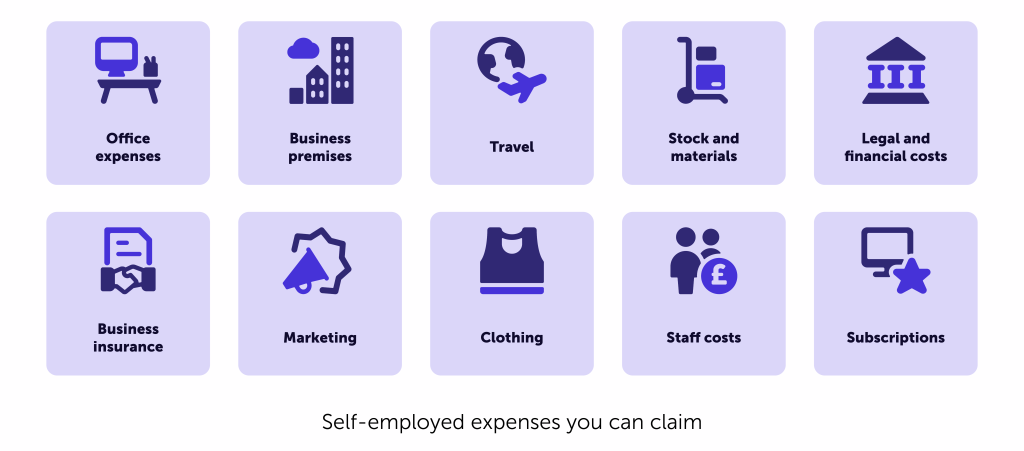
It’s important to keep good records throughout the year. Not only does this make filling in your return easier, HMRC may check your return after you’ve filed and ask to see your records. You’re required to keep your records for five years after the 31 January deadline.
You’re likely to need details of:
- employment income (if you’re also employed)
- dividends
- partnership income
- interest
- rental income
- foreign income
- pension contributions
- Gift Aid
- payment on account
- redundancy lump payment or unemployment benefit
- P11D
- capital gains
- reliefs
- allowances
- benefits
If you need to ask third parties (like banks and building societies) for information, make sure you leave enough time for them to give it to you.
You’ll also need your unique taxpayer reference number (UTR). You get this when you register for Self Assessment.
The self-employed don’t have a tax code as such, but you can read up on the important codes you need to be aware of.
If you need help with your records and filing, you might want to consider hiring an accountant – also keep in mind that you can use accounting or Self Assessment software to help you keep records and check out our bookkeeping tips.
Related guides:
- Tax avoidance vs tax evasion – what’s the difference?
- Do I qualify for business asset disposal relief?
Step 3: Fill in your self-employed tax return
If you’re filing a paper return, you’ll need to complete form SA100 and the self-employed supplement form SA103.
But filing your Self Assessment online gives you three more months to submit. HMRC says it’s “quick, easy and secure” – its system reacts to your details as you enter them and gives you reminders on where to find information if you get stuck.
If you’re filing online (or using the app) and you’ve gathered all the information you need, below is a checklist of what to do when you’ve logged in.
Check your personal details
HMRC should be kept up to date with any changes to your address or your name, for example. You can check and update them during the Self Assessment process.
Fill in the sections that apply to you
HMRC’s system reacts to your details as you enter them. This means that as you fill in the Self Assessment form, it may remove sections that aren’t relevant to you.
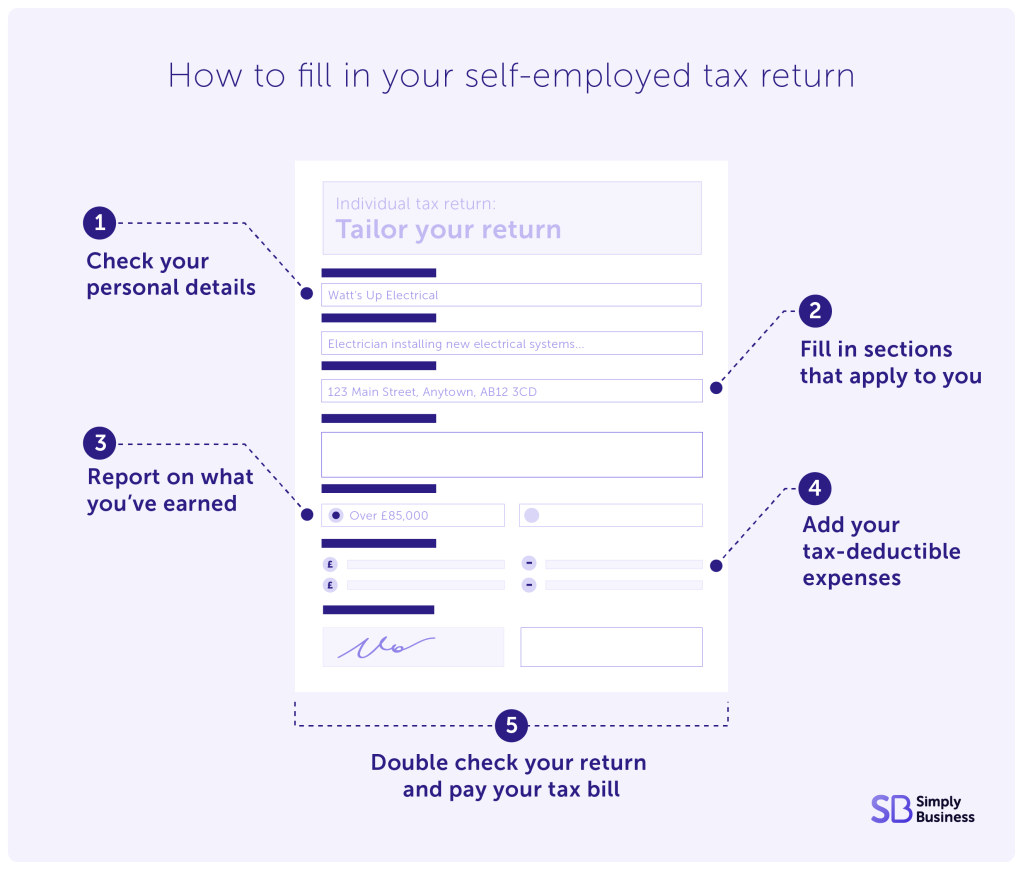
Report on what you’ve earned
This is where you enter your turnover before expenses, so have your sales invoices to hand. Remember that you might also need to enter other income elsewhere, like property income or gains on investments.
Add your tax-deductible expenses
Use your expense receipts when filling in this section. Our guide to what you can claim as self-employed tax deductible expenses has more details.
You can also use simplified expenses (based on a flat rate) if you have relatively few business expenses.
Double check your return
If you need to, you can save everything you’ve entered and come back to your tax return, which is useful if you want to check your numbers.
You can still make an amendment even if you notice a mistake after you’ve submitted your Self Assessment. Read up on how to amend errors and mistakes with HMRC.
Pay your tax bill
When you submit your tax return, you should get a confirmation message and a reference number. HMRC will calculate the tax you owe, as well as the National Insurance contributions you need to pay.
How to pay Self Assessment tax
The quickest way to pay your tax bill is using the HMRC app. And it’s fast-becoming one of the main ways of paying.
HMRC figures show that between April and September 2023, 97,365 customers used the app to pay their tax bill for the 2022-23 tax year – that’s three times the number of people who used it in the same period the previous year.
You can download the app on iOS and Android – you’ll need your Government Gateway user ID and password to sign in for the first time.
HMRC created this video with step-by-step instructions for paying your self-employed tax using the app:
You can also use the app to check your tax details, National Insurance, tax credits, and benefits.
Other ways to pay your tax bill:
- online bank account
- online or telephone banking
- CHAPS
- debit or corporate credit card online
- at your bank or building society
You can also pay by Bacs, cheque, or Direct Debit, but these take longer.
Remember that most self-employed people usually need to make a payment on account too, which can catch newly self-employed people out – make sure you have enough set aside.
Payment on account is when you make two payments towards your next tax bill (one in January and one in July).
Once you’ve filed your first tax return, you can set up a budget payment plan to pay your tax bill in weekly or monthly instalments. But you must be up to date with your Self Assessment payments.
Find out which Self Assessment payment plan is right for you.
What if I miss the deadline for paying my Self Assessment?
The deadline for paying your tax return is the same day as the deadline for filing – 31 January.
If you file your tax return late, you’ll get a £100 penalty (if it’s up to three months late – the fine is more if it’s later). After that, HMRC uses a points-based system to apply penalties.
Read more about penalties for missing the tax deadline as well as proposed changes to the penalty points system.
What is a tax return – and what does it look like?
A tax return is a document that tells HMRC how much income you’ve received during the tax year. This is then used to work out how much tax you need to pay.
HMRC has plenty of guidance on what you need to include on your tax return. The easiest thing to do is to get the HMRC app, but the pictures below give you an idea of what a paper tax return looks like.
The main SA100 tax return form shows the information you’ll need to include.
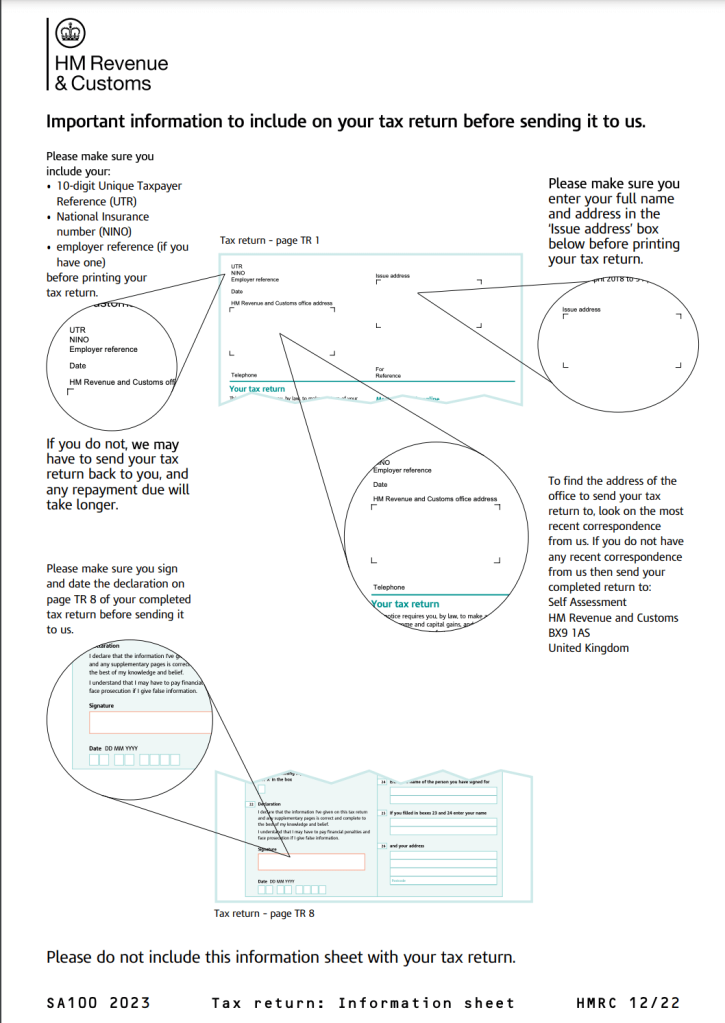
Information to include on your SA100 form. Source: HMRC
Page one of the self-employed supplement form SA103 looks like this:
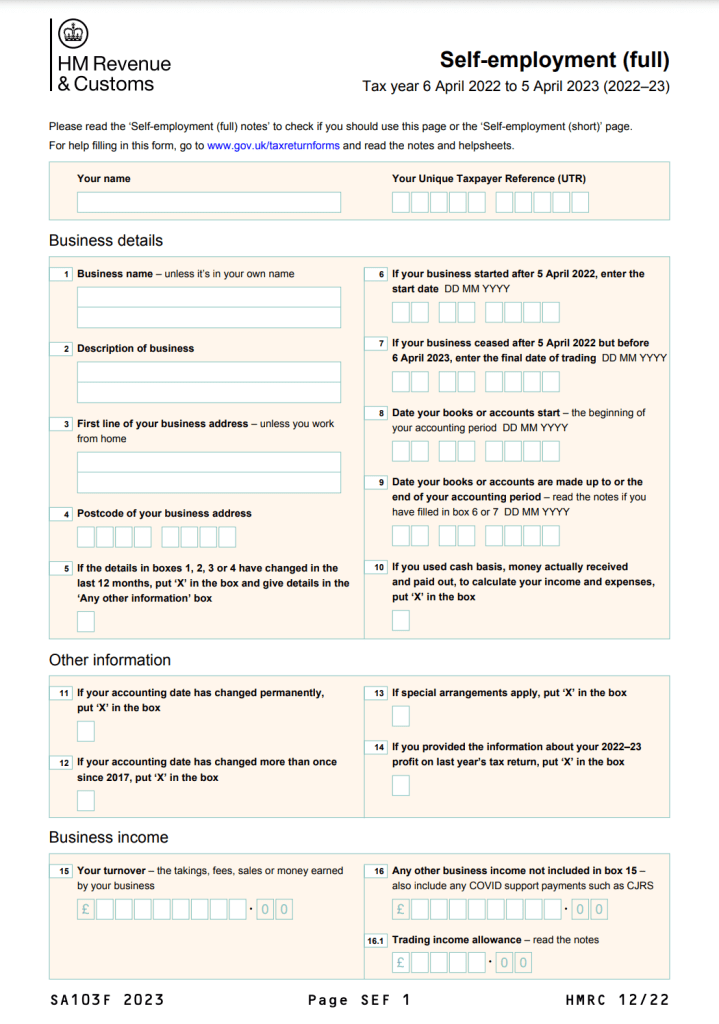
Page one of the SA103 form for filing your self-employed tax return. Source: HMRC
HMRC tax return guidance
There’s lots of Self Assessment guidance on the government website and you can also call the Self Assessment helpline on 0300 200 3310.
But in previous years HMRC’s phone lines have crashed, so make sure you leave enough time to get in touch with them if you need to.
HMRC also warns the self-employed to watch out for tax scams during Self Assessment.
Help if you’re struggling to pay Self Assessment tax
HMRC’s Time to Pay service is available if you can’t pay your tax bill by the 31 January deadline.
This is for those struggling financially – so if you can pay your tax bill, you should, not least because through Time to Pay you’ll pay interest on what you owe. This makes your bill more expensive.
You’ll need to complete your tax return first, so don’t leave it until the last minute. If you miss the deadline for either filing your return or paying your bill, HMRC may give you a fine.
You can call the HMRC Self Assessment payment helpline on 0300 200 3820 to discuss a Time to Pay plan.
Self Assessment – an important part of running a business
Calculating your taxes properly and submitting your tax return on time is a crucial annual job for small business owners.
That’s why you should take your time preparing your Self Assessment and making sure you don’t leave it to the last minute – especially if you’re new to the process.
And when it comes to taxes, there’s plenty of help available from dedicated software to professional accountants.
How are you getting on with filling in your tax return? Let us know in the comments below.
Photograph: Lyndon S/peopleimages.com/stock.adobe.com, Rob hyrons/stock.adobe.com
Ready to set up your cover?
As one of the UK’s biggest business insurance providers, we specialise in public liability insurance and protect more trades than anybody else. Why not take a look now and build a quick, tailored quote?
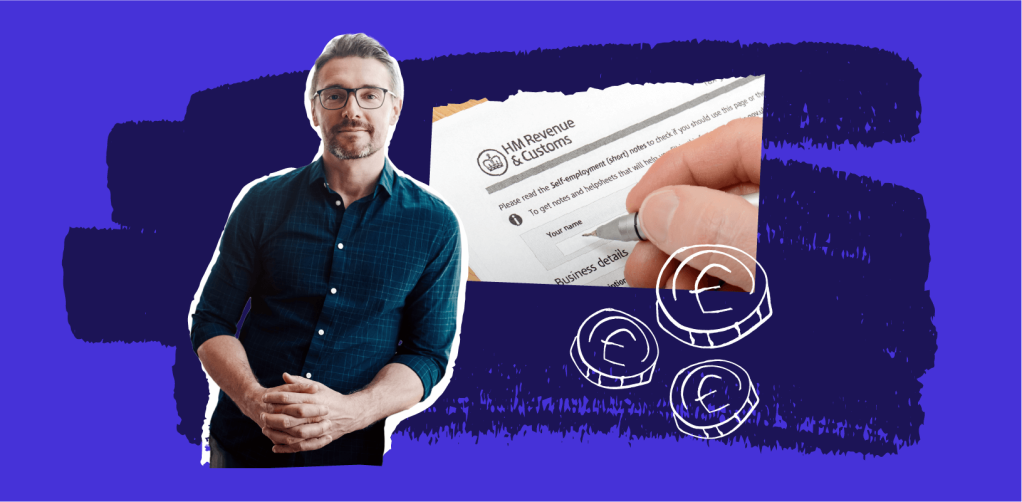
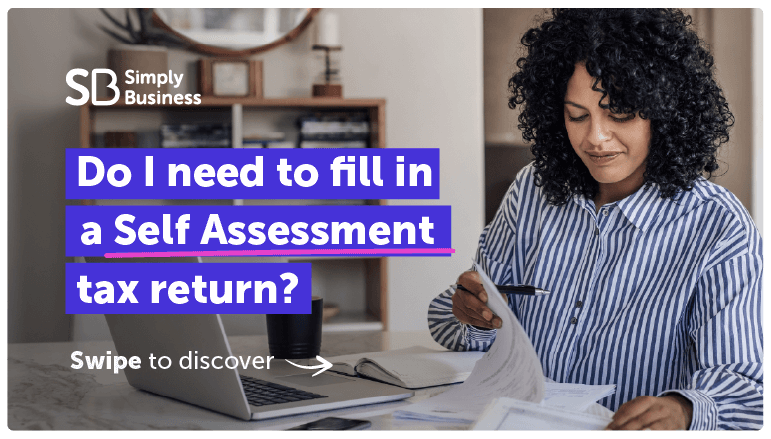
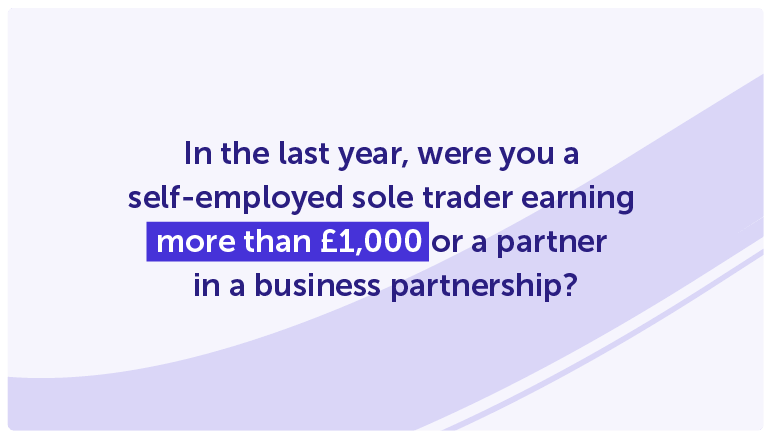
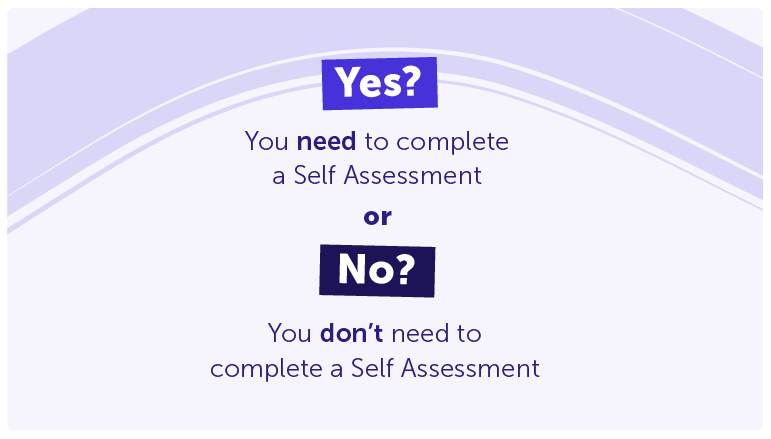
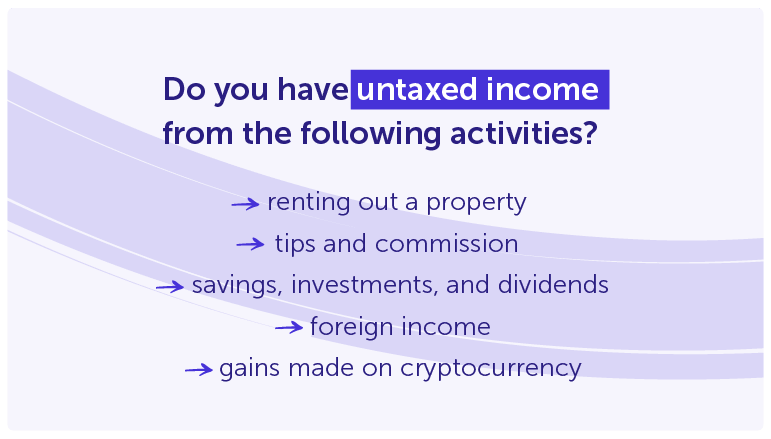
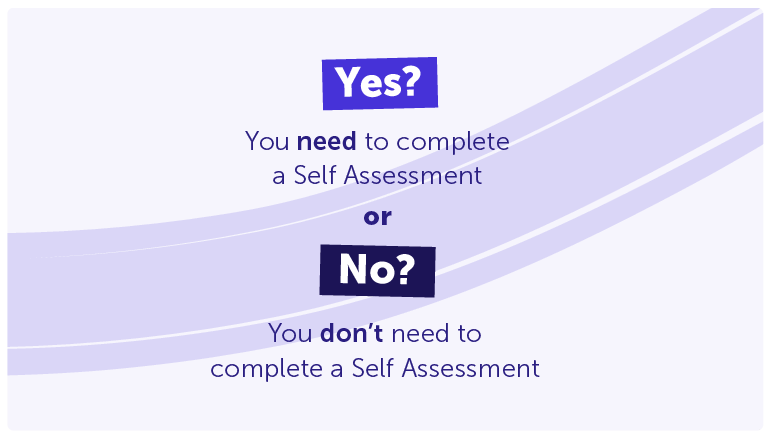
This block is configured using JavaScript. A preview is not available in the editor.